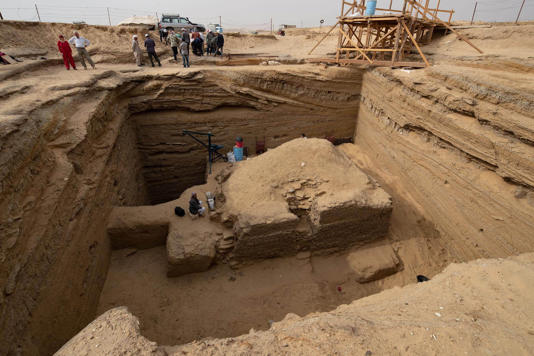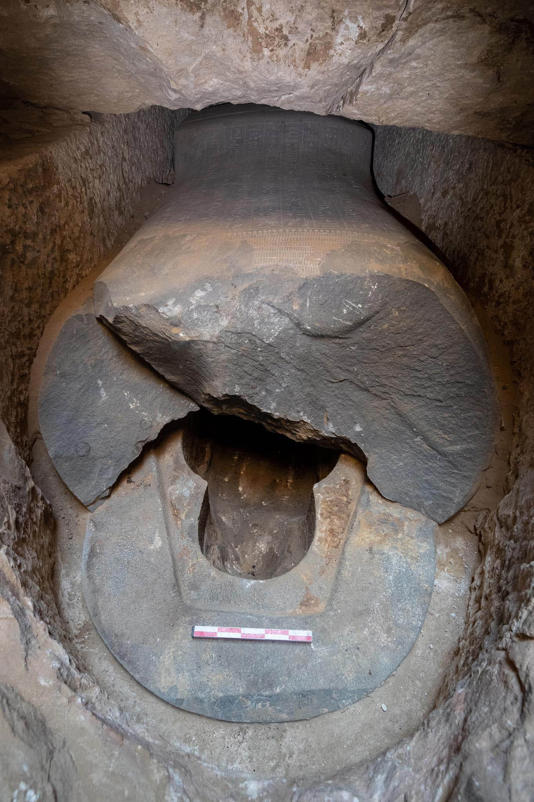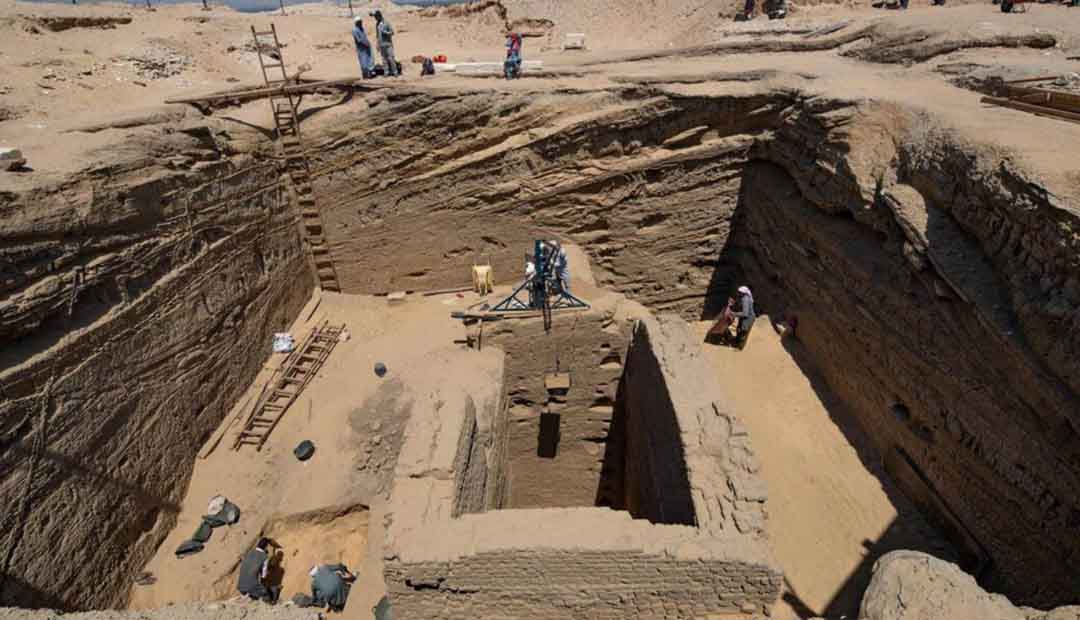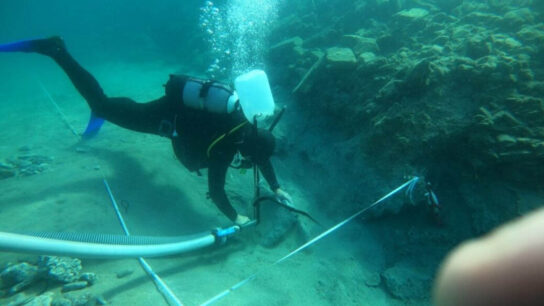Ancient Egyptian Military Officer’s Tomb Discovered near Giza Plateau
A Czech archaeological mission working near the Giza plateau has uncovered the tomb of an ancient Egyptian military official who commanded battalions made up of foreign soldiers, according to a statement from the Egyptian antiquities ministry.
The find has led experts to conclude that ancient Egypt was much more globalised than they once thought, the ministry said. The tomb is believed to have belonged to Wahibre merry Neith, who lived between the late 26th dynasty and early 27th around 500 BC.
His tomb was found about 12km southeast of the Pyramids of Giza, very close to an embalming cache discovered in February, which also belonged to Wahibre-merry-Neith.
The tomb was found by a mission from the Egyptology Department at Prague’s Charles University, one of the oldest in Europe.

The tomb is divided into separate parts by narrow bridges cut into the natural rock.
Measuring 14 metres square, its main well was about 6 metres deep. However, as is the custom in ancient burial sites from the time, there was a smaller and deeper shaft in the middle of the main well that led to the double sarcophagus where Wahibre-merry-Neith was buried.
At the bottom of the deeper well, which measures 6.5 x 3.3 metres, at a depth of about 16 metres, the mission found two sarcophagi, one inside the other.
The outer sarcophagus is made of two large slabs of white limestone, said the ministry’s statement, while the inner coffin is made out of basalt rock and fashioned in the shape of the human body.
The upper part of the basalt sarcophagus was inscribed with excerpts from the 72nd chapter of the Egyptian Book of the Dead, according to a statement from mission head Dr Marslav Barta.

The texts depict the resurrection of the deceased and his journey to the afterlife.
The basalt sarcophagus measures 2.30 metres long and 1.98 metres wide.
The sarcophagus did not contain a mummy, leading the mission to conclude that the tomb had been raided around the 4th or 5th centuries AD, Barta confirmed in a statement.
He said his team was able to approximately date the theft because of two ceramic vessels that were left behind in the main well. The upper part of the basalt sarcophagus was found smashed, said the ministry’s statement, suggesting that this was where the graverobbers entered the tomb.

Though the tomb was markedly light on artefacts, the mission was able to extract an intricately carved scarab, around 400 ushabti statues made of faience (a sintered-quartz ceramic material prevalent in ancient Egypt) and two alabaster canopic jars (containers that held the eviscerated organs of the deceased which were an important part of ancient burial customs).
Dr Muhammad Mujahid, deputy head of the Czech Mission, said that “although the archaeological excavations of the cemetery of Wa-ip-Ra Meri Nate did not provide us with many important archaeological finds or elaborate funerary items, this cemetery is considered unique and important”.
He explained that it provides new insight into the turbulent period that marked the beginning of Persian domination over ancient Egypt.
On his part, Dr Waziri said: “The design of this well-tomb has no identical counterpart in ancient Egypt.”




